My Wapping walk next Saturday is sold out. There are some places remaining on walks in Wapping, the Barbican, Southbank and Bankside later in October. Click here for details and booking for my final walks of 2022.
Many of London’s streets have lost much of their local character over the last few decades. Many long term trends have contributed to this. The spread of global brands, online shopping, local population change, quick profits through a conversion of a building to flats, architectural styles etc.
An example can be found in Penton Street, a turn off from Pentonville Road, just to the west of the Angel, where, in 1985, at number 10 Penton Street could be found the shop of G.J. Chapman:
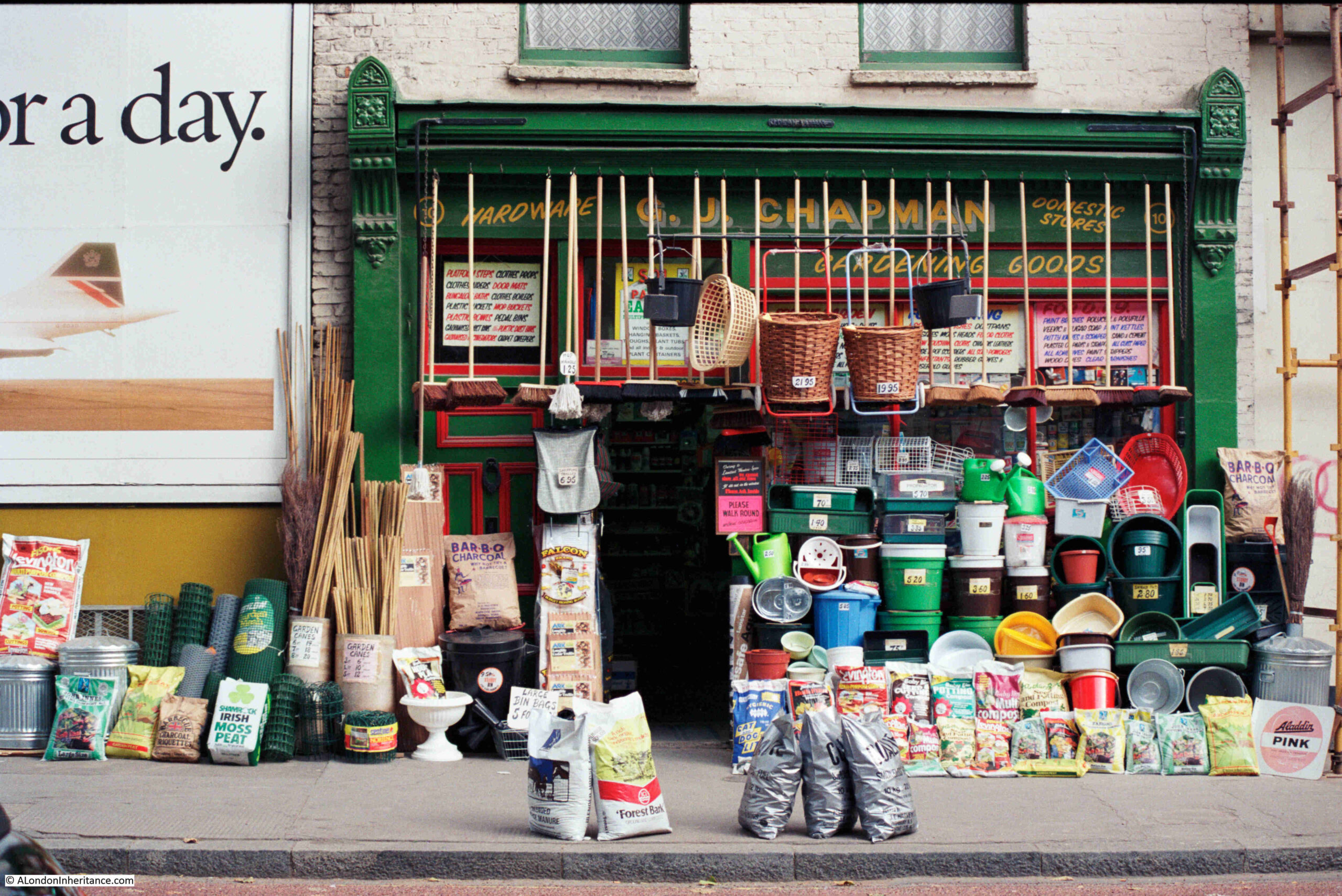
The same view, 37 years later, in September 2022:
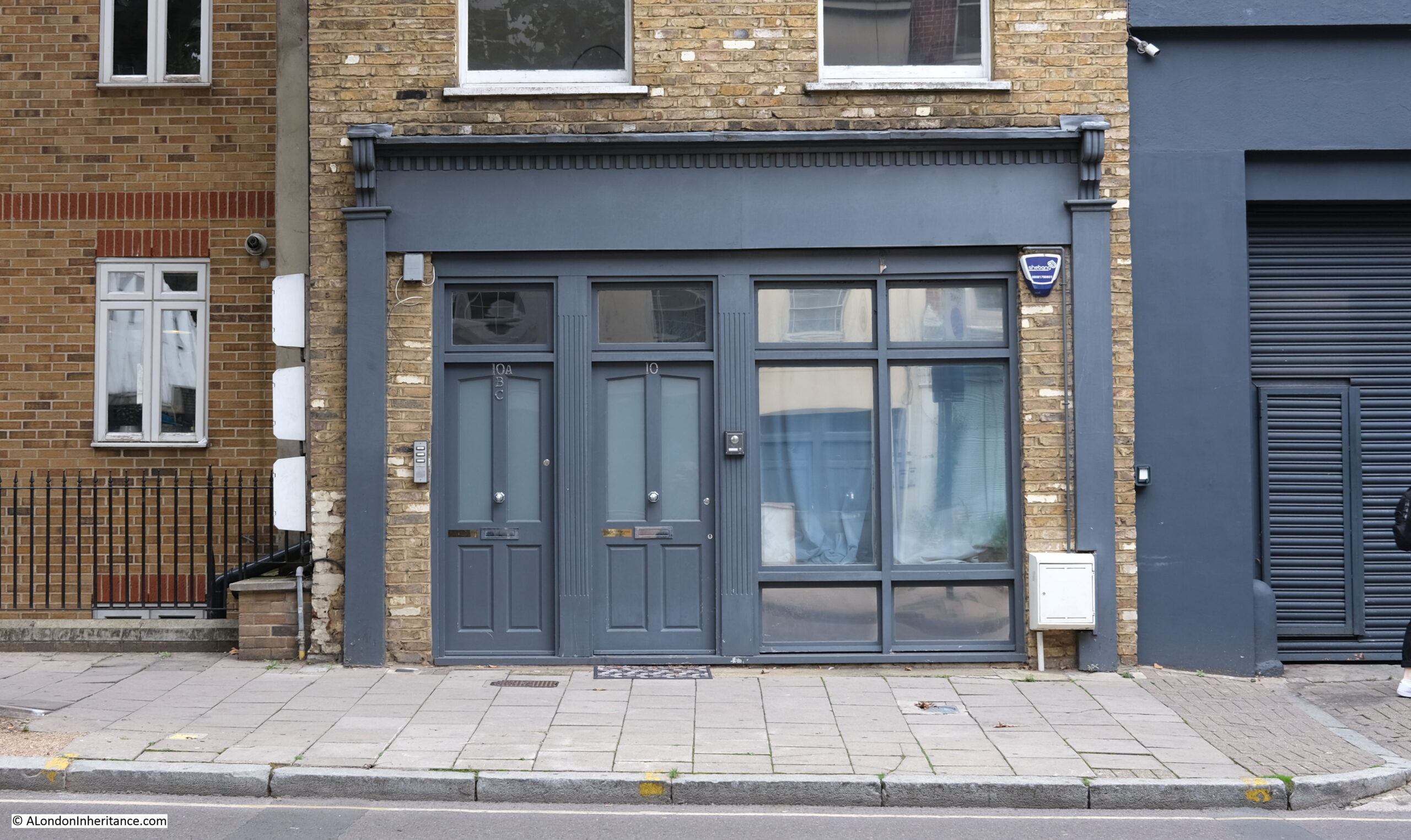
Chapman’s was a very different shop. Whilst there were plenty of general hardware stores, also shops that stocked gardening supplies, they did not usually have so much stock on display outside the shop. I cannot find exactly when Chapman’s closed, I do remember it was still open in the mid 1990s, but after that it became one of the ongoing changes that are so easily missed.
I assume that the building has become flats, with two front doors, mirroring the doors in the original shop. The white paint has been cleaned from the brickwork, and it is not clear how much of the original wooden surround to the shop front remains.
The space behind the BA Concorde advert on the left in 1985 is now occupied by a new block of flats.
Penton Street was one of the first streets built as part of the Pentonville development. The name comes from the owner of the estate on which the development was built, Henry Penton, the MP for Winchester. The addition of the French “ville” to Penton’s name may have been to give an upmarket feel to the estate, which was helped by the rural setting at the time of the original development, with much of the land to the north still consisting of fields.
Penton Street seems roughly aligned with a lane that ran through fields along what is now Amwell Street to the south, then up to Copenhagen Fields, although only a small part of the original lane, along Penton Street retains the original route.
The first terraces along Penton Street were built in the 1770s, and the area between Penton Street and the Angel was fully developed by the end of the 18th century.
The southern end of Penton Street joins Pentonville Road, opened in 1756 as the continuation of the New Road, an 18th century north circular around the north of the city, providing access to the docks, and for drovers driving sheep and cattle to market in Smithfield, whilst avoiding the crowded City streets.
The northern end of the street joins Barnsbury Road which continues north. It is a relatively short street and can be walked in a matter of minutes.
On the corner of Penton Street and Pentonville Road is the Lexington. A pub on the ground floor and music venue on the first floor. It was originally built in 1875 and was named the Belvedere, replacing an earlier pub on the site, with the same name, and dating from the development of Penton Street.
The Lexington today:

Penton Street seems to have been developed as a residential street, with terrace housing, however commercial premises and shops gradually took over parts of the houses, and there has been considerable redevelopment so even when the façade facing onto the street looks original, a glance behind will show a later rebuild, as can be seen in the example in the following photo where later brickwork forms the side wall to an earlier front wall:
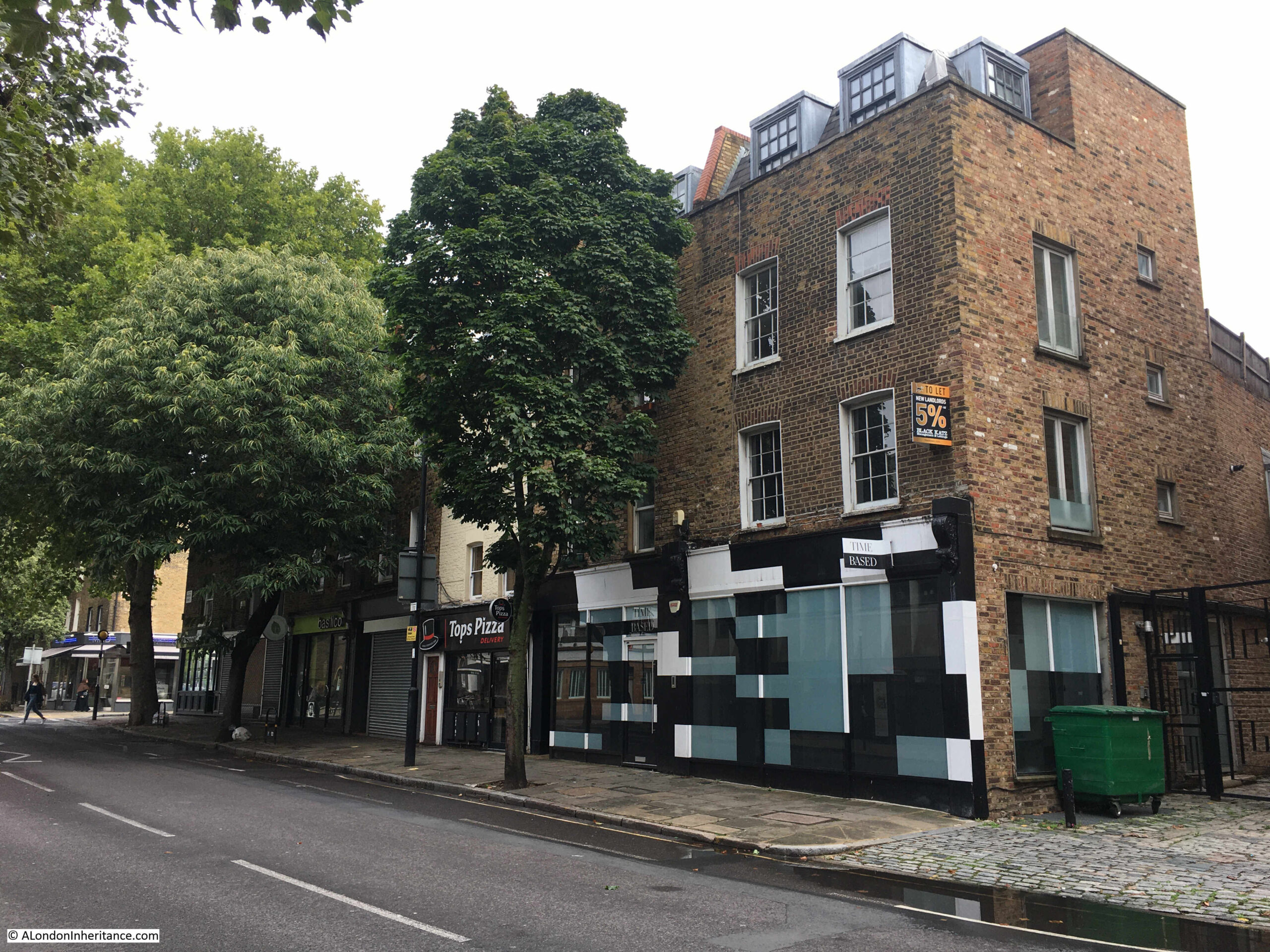
Further along Penton Street is another large pub, the Chapel Bar. Again, another pub that has had a recent name change. It was originally the Queen’s Arms, and seems to date from around 1848 which is the year of the first newspaper mention that I can find:

The clown, Joseph Grimaldi, lived in Penton Street at what is now number 44 between 1799 and 1800, although I could not find any plaque on the building. There is a plaque on number 28 recording that the building was the London headquarters of the African National Congress between 1978 and 1994:
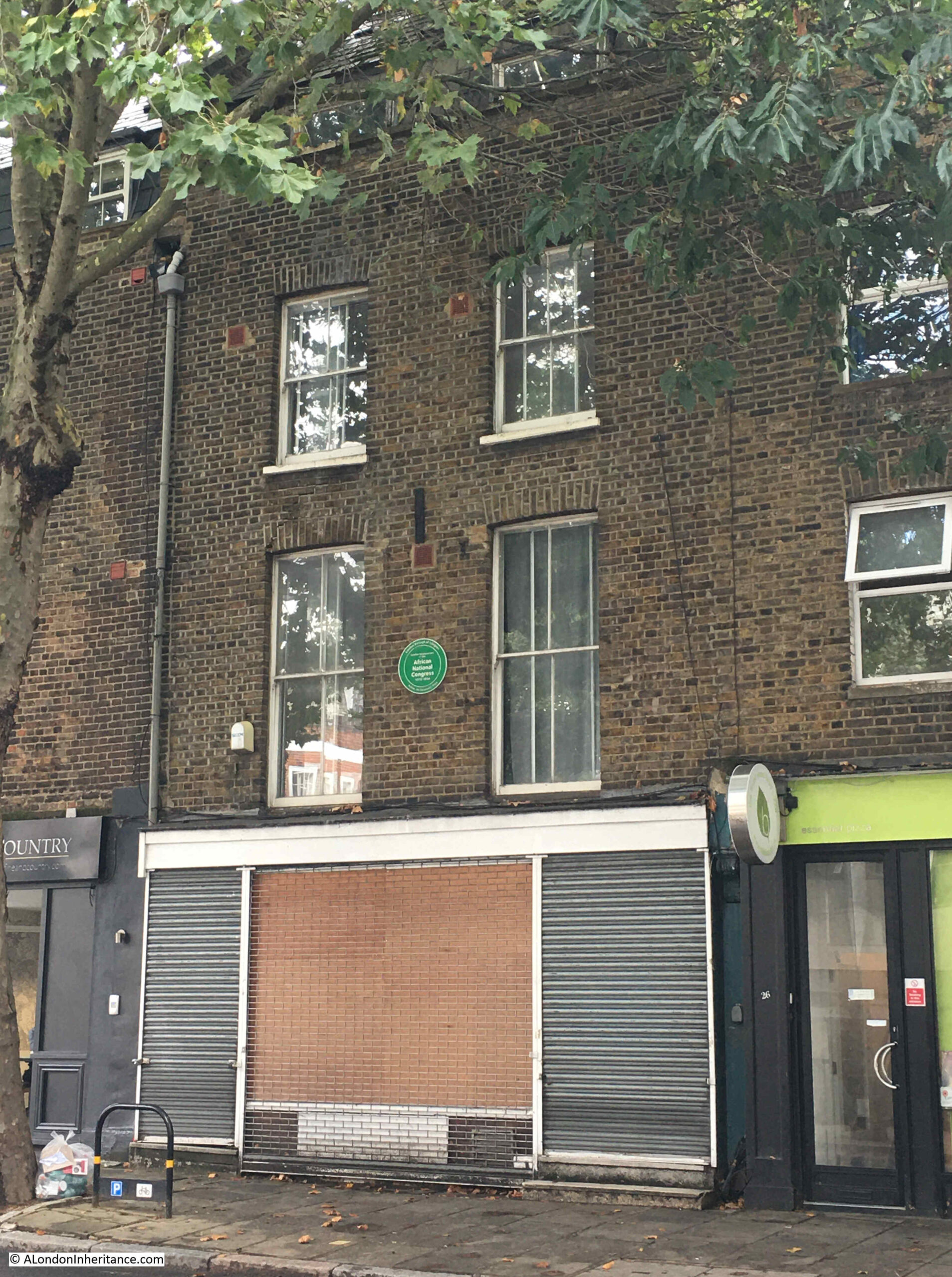
Although G.J. Chapman’s shop has gone, if we turn off Penton Street into Chapel Market, we find a street market, and a shop with a similar stock to Chapman’s, but without the impressive display of goods for sale on the street. Chapel Market Building & D.I.Y:
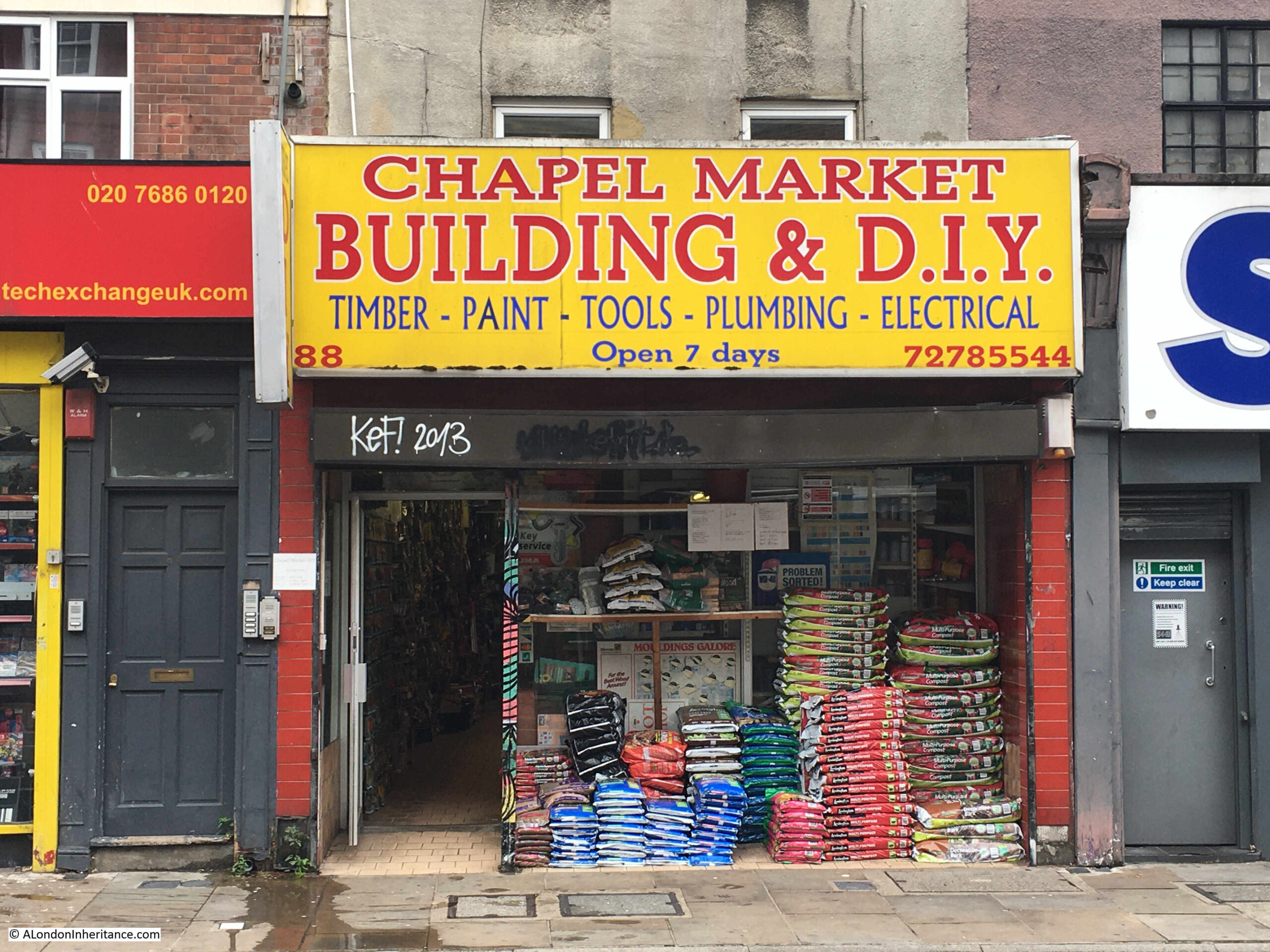
Originally Chapel Street, the street was developed soon after Penton Street and was lined with terrace houses by the 1790s. The street would stay residential for the first half of the 19th century, but would take on a much more commercial character from the 1850s onwards. This was probably down to the rapidly growing local population, and the commercial opportunities that such a population offered.
The ground floors of the large terrace houses were converted into shops which were extended over an original small front yard to bring the shop up to the edge of the street.
As well as shops, the street became the hub for a street market. The market may predate the arrival of shops in the 1850s, but again it was from 1850 onwards that the street became the venue for a large street market.
The mid 19th century also saw the large terrace houses turn into multi-occupancy houses and there were contemporary reports of much poverty and squalor in the street.
Over the years, the street has also seen many of the original terrace houses demolished and replaced with office blocks and large shops.
The following photo sums up the changes to Chapel Market, with stalls of the street market in the foreground, terrace houses to the right, with ground floor shops extended over the original yard to the street, and much later buildings on the left which replaced the original terrace houses:
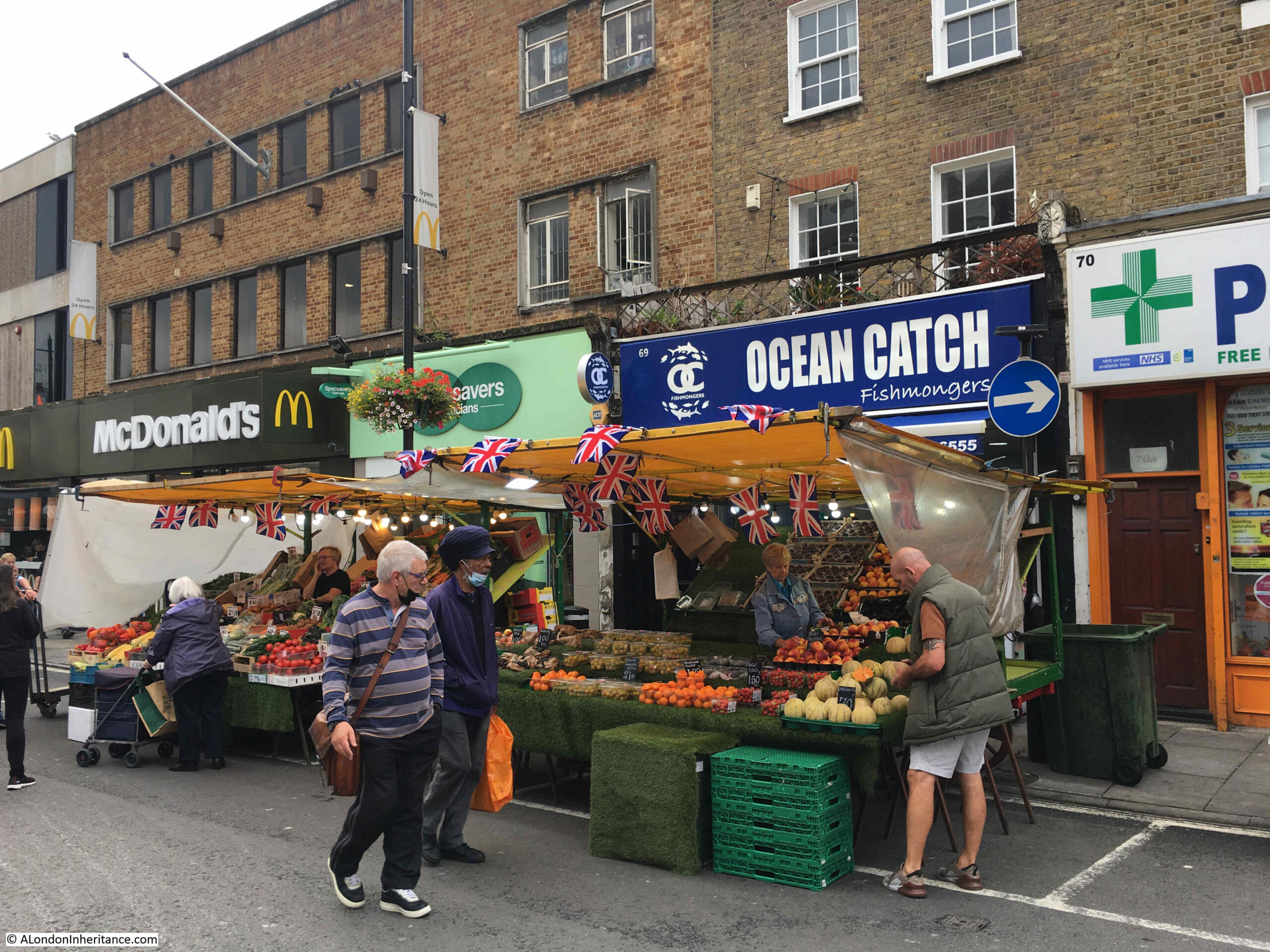
Both the market and the shops now offer a very wide mix of goods and services from fast food, to fruit and veg, fishmongers, supermarkets, cafes, pharmacies, opticians, florists etc. with the stalls in the market changing during the week.

The name change from Chapel Street to Chapel Market came in 1936 to recognise the size and importance of the market.
The name chapel does not refer to any local chapel. There appears to have been an intention around 1770 to build a chapel of ease around Chapel Market and Penton Street, however a chapel was built much further to the west along Pentonville Road, but the name stuck with the intended original location near Chapel Street, now Chapel Market.
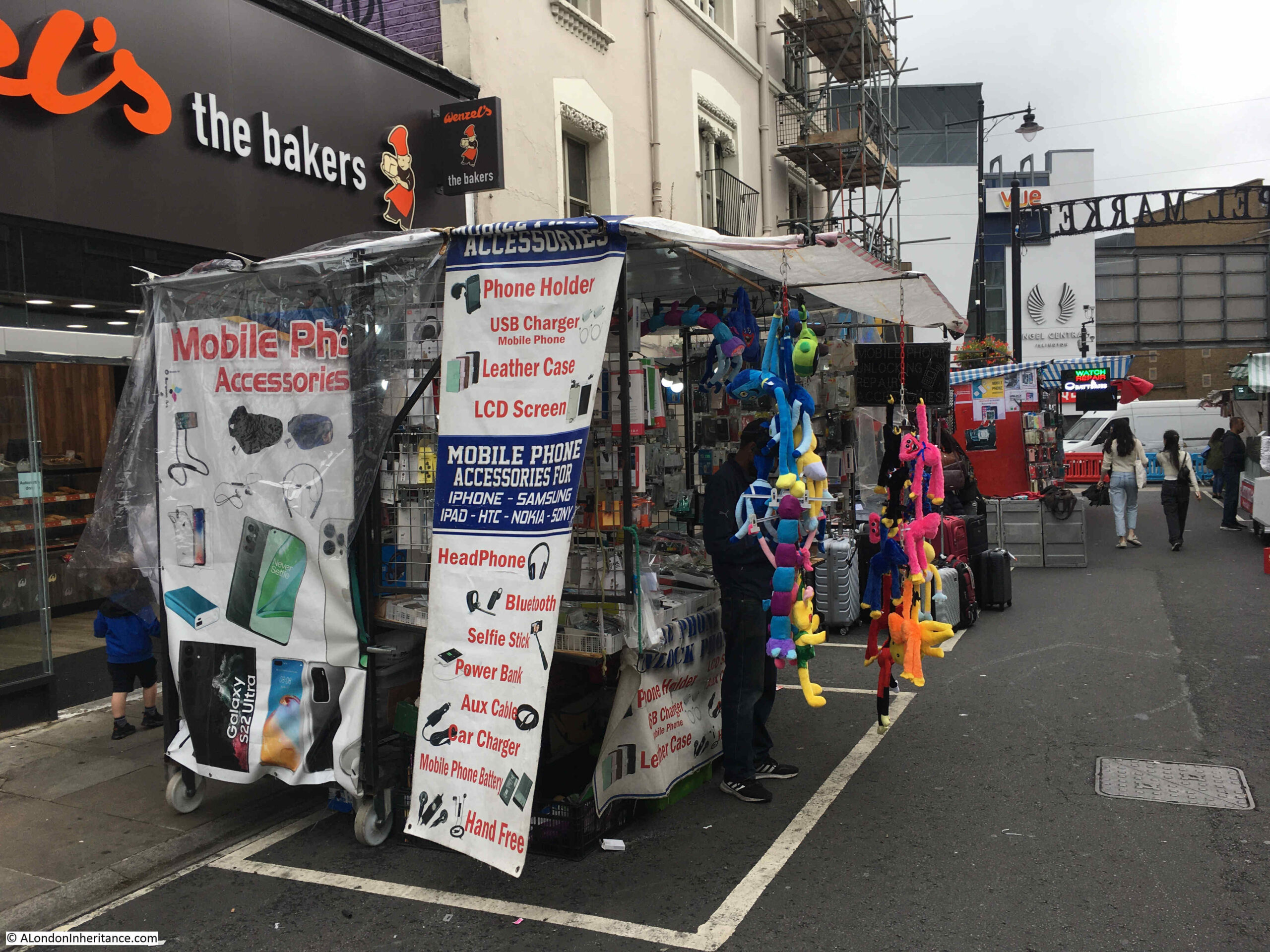
The market was open all day and all evening during the second half of the 19th century. An article in the Clerkenwell News in September 1870 reports on the raging of a “fever” in the area and the precautions that the local Parish Vestry were trying to implement. This included more frequent removal of refuse from Chapel Market and the application of disinfect along the gullies of the street.
The problem was that the market was seldom closed before midnight, so the best that the Vestry could do was to ensure that the street was swept and refuse removed by seven of the following morning, ready for the market to open again.
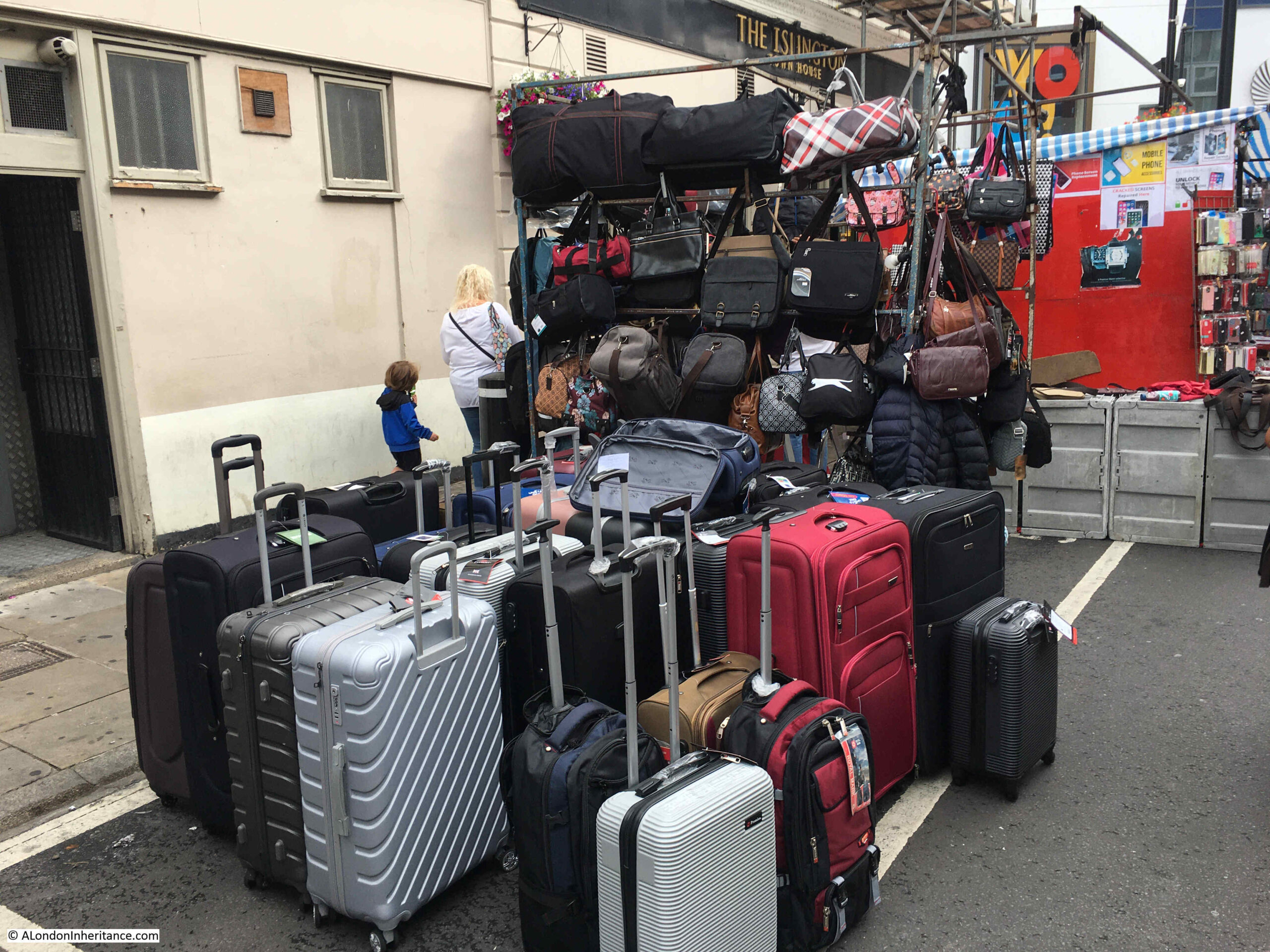
Chapel Market was the site of the first branch of Sainsbury’s in 1882 following on from their original shop in Drury Lane. The Sainsbury’s archive has a number of photos of the original shop, and Chapel Market in the late 19th century, and can be viewed here.
Marks and Spencer would also arrive in 1930. They now have a Food Hall on the street, and Sainsbury’s have moved to a much larger store, close by in Liverpool Road.
Today, the market sells things that in the 19th century would have been considered science fiction:

The entrance to Chapel Market from Liverpool Road:
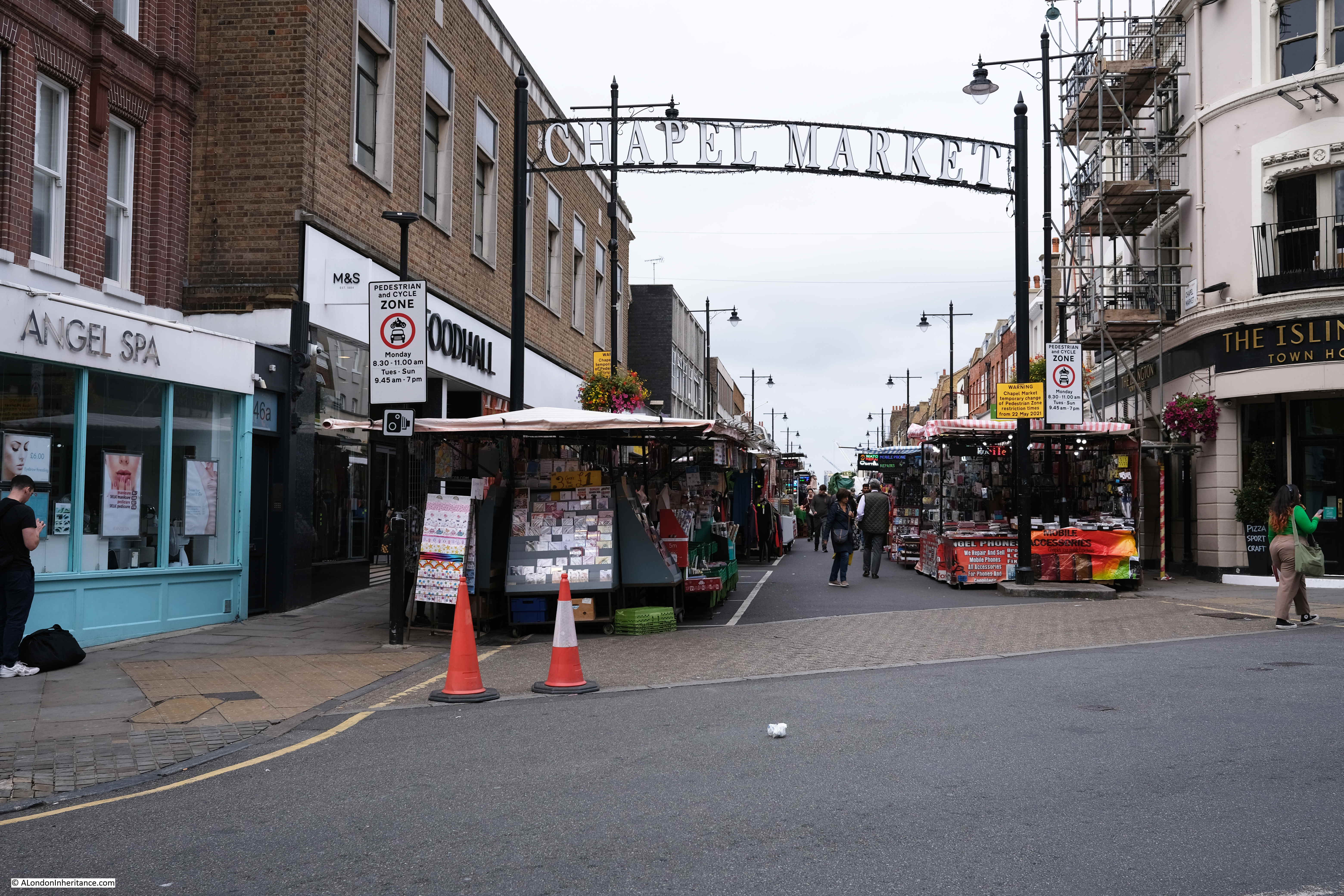
So although G.J. Chapman’s shop has gone, and been replaced by a rather bland façade onto Penton Street, there is still a thriving local cluster of shops around the market in Chapel Market, which will hopefully continue to serve the local population for many years to come.
The 1985 photo of G.J. Chapman’s was taken by my father, and when I scanned the strip of negatives with this photo, there were a couple more which brought back the challenges of using film. There were two other photos of the shop, but in each photo a vehicle had just intruded into the photo:
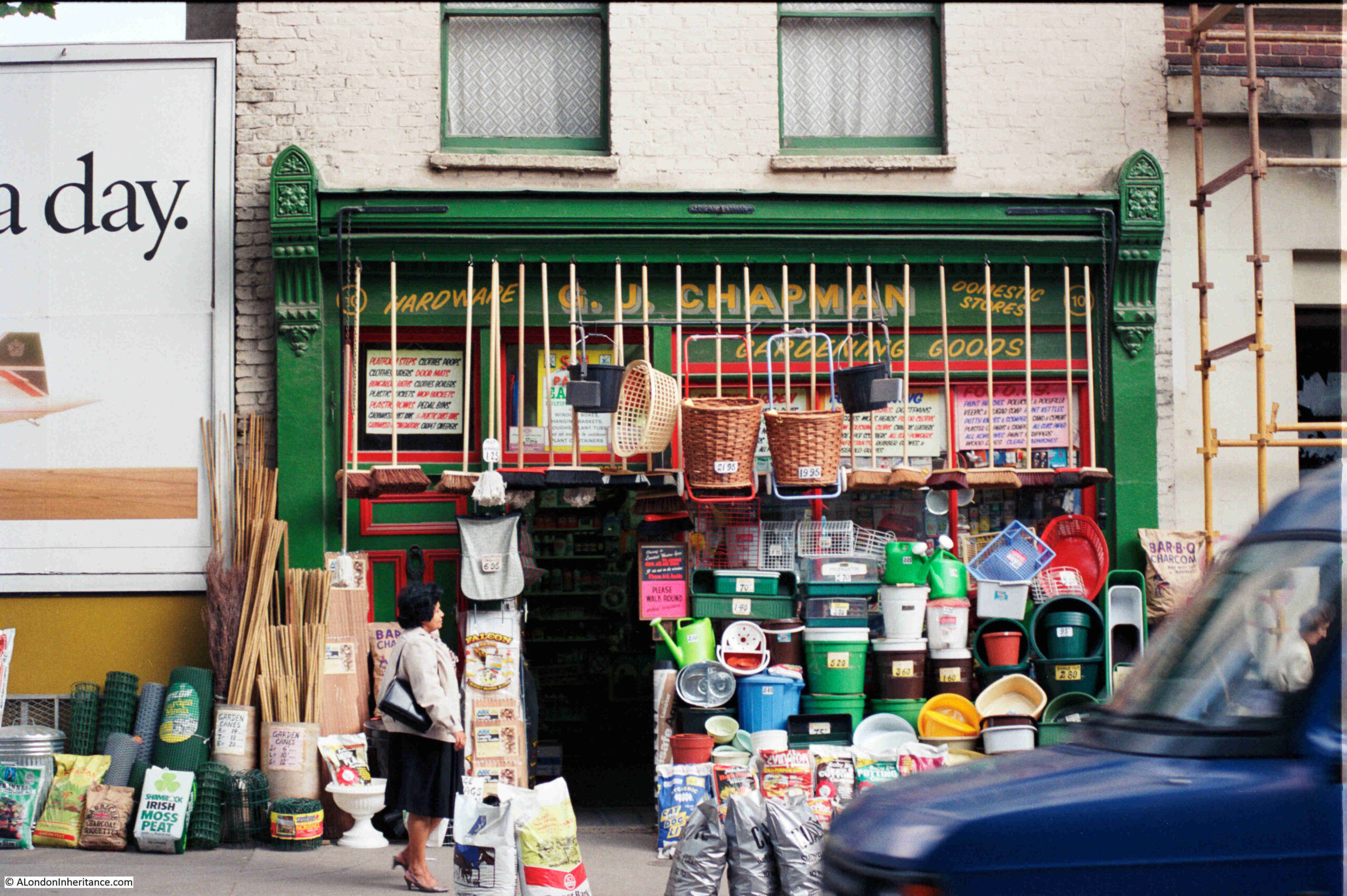
Penton Street has always been a relatively busy road, and framing a photo, then trying to avoid any passing traffic is still a challenge.
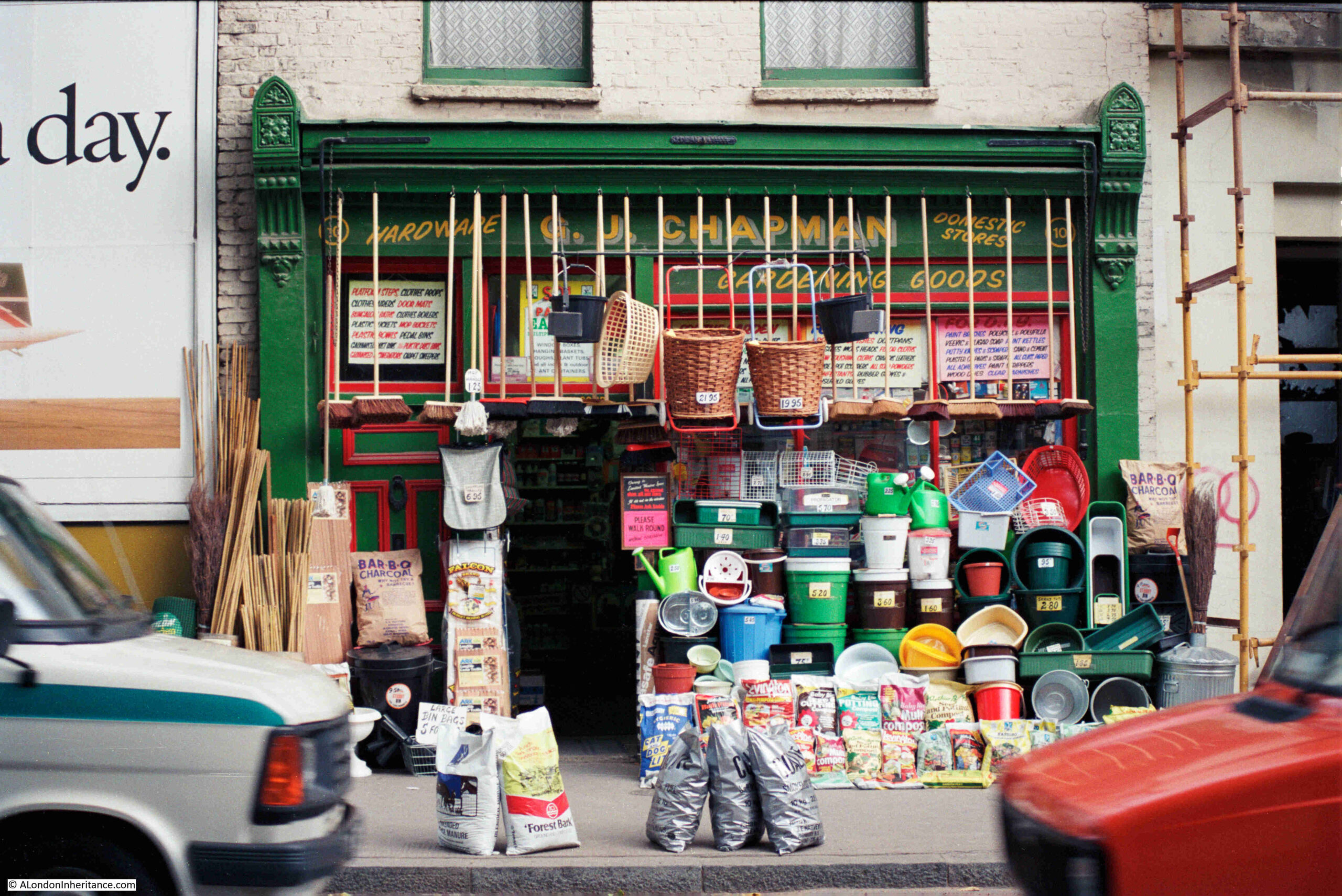
I was using a digital camera where the number of photos is limited by the size of memory card, and each photo is basically free. This was not the case with film, and I well remember the challenges of trying to get the wanted photo in a busy environment with a 36 exposure film in the camera. Luckily, my father finally got a vehicle free photo of G.J. Chapman.

The first photograph above, of G J Chapman’s shop, is an absolute gem.
I actually still use a shop like that in Oxford !
I used to live on Caledonian Road where it crosses the canal, and I worked from home on Fridays. I would often walk over to Chapel Market to get lunch on Fridays. There was a burger place there that made great burgers. The vendor used to call everyone “agent.”
“Agent 2,” he called out to me, being the second customer in line, “what would you like?”
“A burger – non-chilli – with cheese, please,” I replied.
“Non-chilli with cheese,” he confirmed, before moving on to get the order from Agent 3.
It was called a “designer burger” place, but was very in keeping with the local vibe of the market.
Don’t forget No 12 Wapping Wall. Birth Place of famous Fingerprint Pioneer and Commissioner of Police of the Metropolis Sir Edward Richard Henry born in 1850 to Irish Parents. His Father was Doctor Alexander Henry. Edward’s mother Maria died on Christmas Day 1851 of TB. Edward’s Fingerprint Classification System revolutionised the Identification of Criminals throughout the world and is still in use in certain parts of the world. He was Commissioner of Police 1903 – 1918 and was the only Commissioner whose life was nearly taken by an assassin’s bullet.
My father, who was born in 1912, grew up in Liverpool Road and mentions Chapel Street several times in his memoirs. For example: “I would often go to Chapel Street to shop at Sainsbury’s where I would buy choice gammon rashers at 11d per pound, and best salted butter at the same price.”
Here’s another: “When Jack and I were teenagers, we were near Chapel Street when we saw a man working a “scam”. He was stopping women who had been shopping and offering them a free bag of some sort of washing powder. As they walked away with the packet he would detain them, saying that they had to buy another packet of something for one shilling, to get the “free” packet. Nine times out of ten it worked. He embarrassed the shopper into paying the shilling demanded. I was very angry and intervened. When the next person was asked for money I said ‘Don’t give him any, he gave you that packet free’.” Jack was his brother.
I use to work at Macready steels which was at top of penton rise till it closed in early 90s it was knocked down and is now flats . Our bright orange lorries were well known in the area and so famous corgi even created a model one .
You really have to admire G J Chapman in the way he presented his wares at the front of his shop !!
It must have taken an age to display even before he opened and then to take down and put away after closing time!!
I wonder how much stock would be “Borrowed” by the society of today?
There used to be a great comic stall there in the late 60’s, near the two ice cream parlours. The stall had a good selection of the latest American comics (mainly DC), and you could get a refund on the previous week’s comics in good condition, so the new ones were effectively half price! A great rent-a-comic memory for me!
Thank you very much. I’d love to take a walk but Pentonville, alas, is a long way from Adelaide. My great great great grandparents were bakers at 21 Penton Place in 1821. Will you walk along Penton Place?
Yours sincerely,
Janice Perry
You mention that Chapel Street changed its name to Chapel Market in 1936. I was born in Barnsbury in 1948 and was taken there regularly until we moved up to Crouch End in the mid-fifties. Everybody I knew (my parents included) still called it Chapel Street – more to the point, people used the phrase “Chapel Street Market” !! (See the post above from Carole Mason)
You omitted from your post on Penton Street, the fact that the headquarters of the Public Carriage Office were based there, moving from Lambeth Road in 1966. The Public Carriage Office was the organisation that supervised the London Taxi Trade (Black Cabs) and was where taxi-drivers did their exams for “The Knowledge” and where the drivers were issued with their (green or yellow) badges. Taxis’ were also given their annual examination at the same place. The Public Carriage Office was a sub-division of the Metropolitan Police until 1999 in which year the government transferred authority for licensing black cabs to London Transport. In the year 2000, Transport for London (TfL) was created and they took over all London Transport’s responsibilities, including black cabs. Then in 2010 the Public Carriage Office was renamed and given the catchy title ‘The London Taxi and Private Hire Licensing Authority’ and re-located to TfL’s HQ at Palestra House at 197 Blackfriars Road.
An area I have not been too for such a long time loved the bustle of the market
I worked at M&S in the 70s I remember chapel market in its hey day. Apple fritters, de marco ice creams and the seafood stalls. I can still smell it